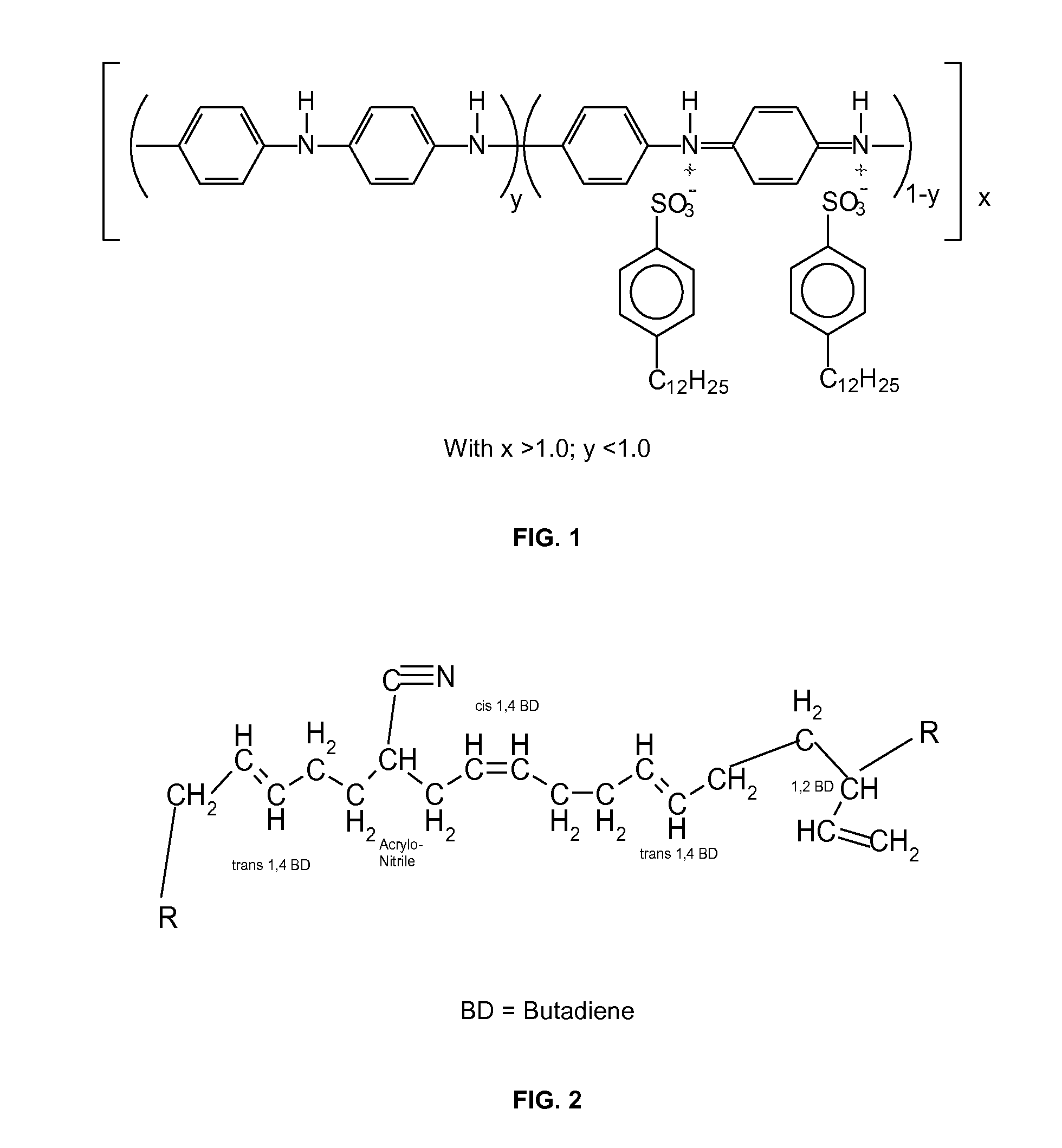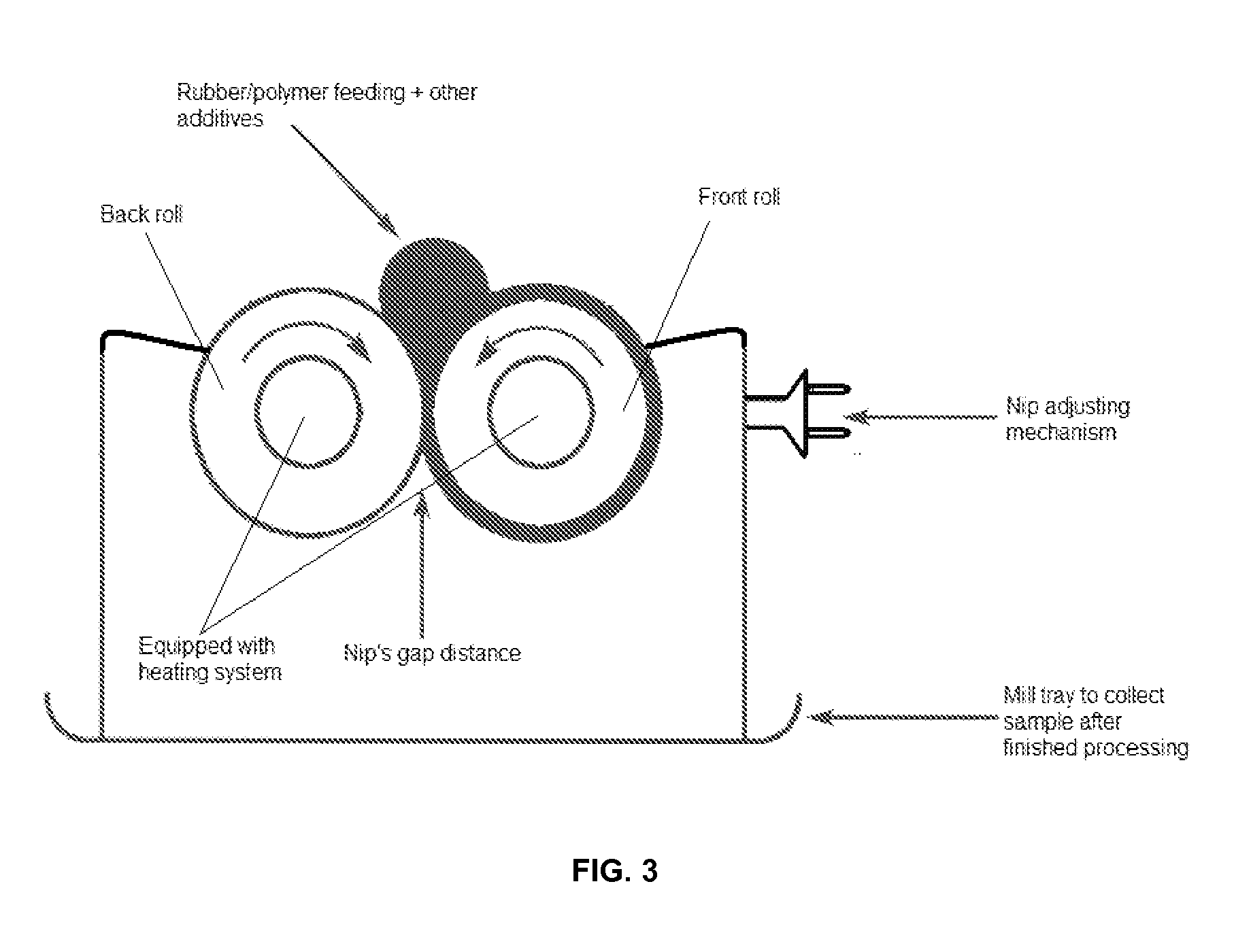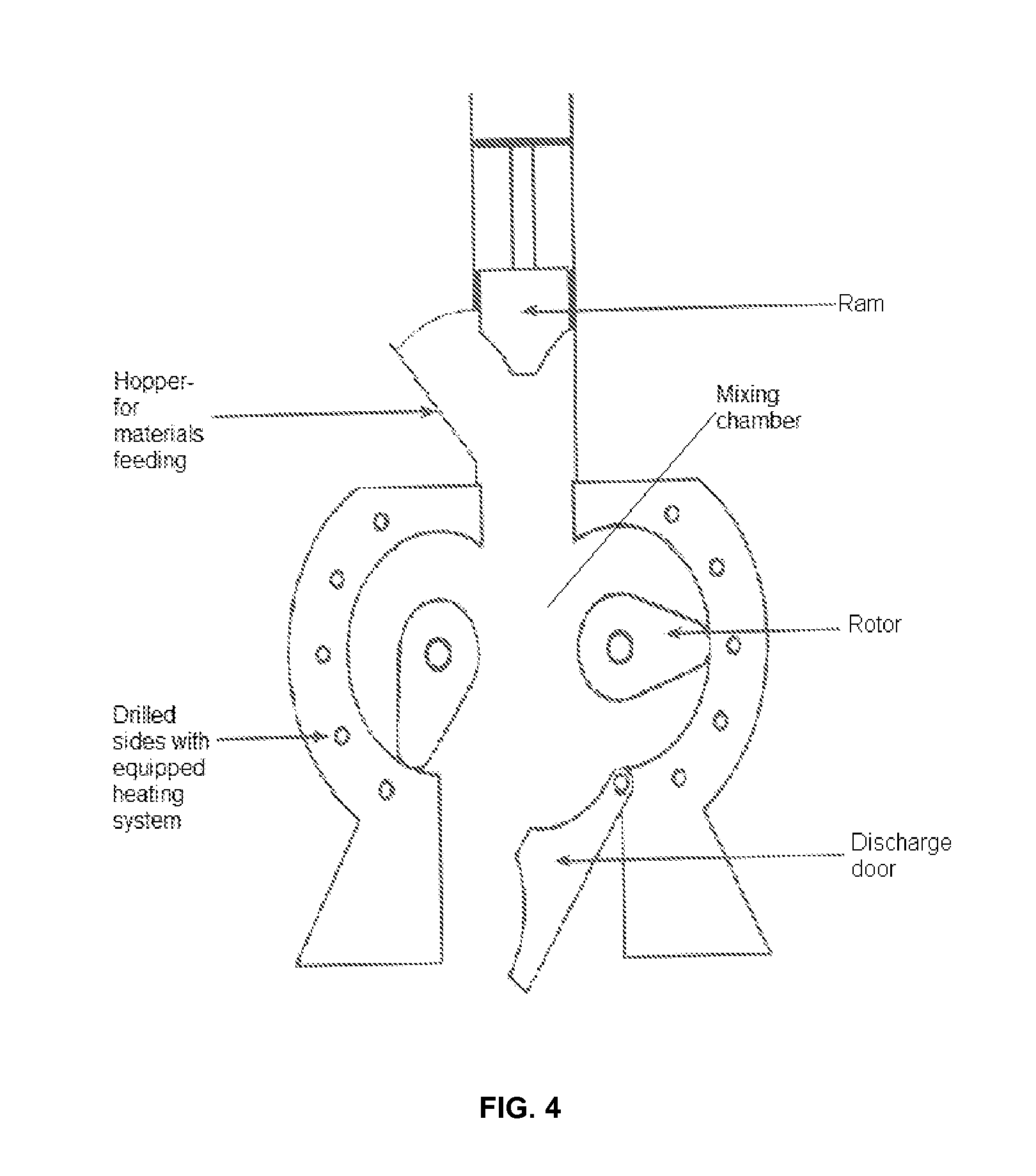Carbon blacks-free sulfur-vulcanised electrically conductive rubber blends
a technology of electrically conductive rubber and sulfur-vulcanised carbon blacks, which is applied in the direction of sulfide conductors, conductive materials, organic conductors, etc., can solve the problems of large difficulty in direct dispersal, non-practical and non-environmental friendly methods
- Summary
- Abstract
- Description
- Claims
- Application Information
AI Technical Summary
Benefits of technology
Problems solved by technology
Method used
Image
Examples
example 1
Preparation of 50±2 Grams of Polyaniline Dodecylbenzenesulfonate (with Protonation Level, 48%) as the Electrically Conductive Filler in Dry Solid Form
Synthesis of Polyaniline-Emeraldine Base:
[0030]Hydrochloric acid [HCl] doped polyaniline is synthesised by oxidative chemical polymerisation. 50 mL of aniline (monomer, 99 wt %) is dissolved in 375 mL of 2 molar [M] HCl and pre-cooled to 1° C. Based on the value of oxidant / monomer initial mole ratio (r) equal to 1.0, the solution of oxidant is prepared by dissolving 125.2 g ammonium persulphate (99 wt %) with 276 mL of 2M HCl and pre-cooled to 1° C. The oxidant solution is added gradually to the monomer solution over a period of 20±5 minutes, with constant stirring by an overhead stirrer to ensure thorough mixing. The addition of oxidant can cause a sudden increase in temperature. A few drops of anhydrous ferric chloride solution (99 wt %) are added to the polymerisation mixture as a catalyst. The polymerisation mixture is maintained a...
example 2
[0032]Preparation of sulfur vulcanisation system containing poly(butadiene-co-acrylonitrile)-polyaniline dodecylbenzenesulfonate blend masterbatches:
[0033]Poly(butadiene-co-acrylonitrile)-polyaniline dodecylbenzenesulfonate blend masterbatches with different compositions [in parts per hundred rubber, p.p.h.r.] of poly(butadiene-co-acrylonitrile) [grade with 48 weight % of acrylonitrile contents, with electrical conductivity in the order of ×10−14 S / cm]: polyaniline dodecylbenzenesulfonate [with protonation level, 48%, prepared as described in Example 1], i.e. 99:1, 97.5:2.5, 95:5, 92.5:7.5, 90:10, 80:20, 70:30, 60:40 and 50:50 are prepared by using an internal mixing device as illustrated by FIG. 4. A fill factor of 0.70 (from the total free volume of an internal mixing device's mixing chamber) is used to perform all mixings. The starting temperature for each mixing is 150° C. The rotor speed is 100 r.p.m. Stages of each mixing are as described in Table 1:
TABLE 1Stages of Preparatio...
example 3
Preparation of sulfur-vulcanised poly(butadiene-co-acrylonitrile)-polyaniline dodecylbenzenesulfonate Blends
[0035]Each of the sulfur vulcanisation system containing poly(butadiene-co-acrylonitrile)-polyaniline dodecylbenzenesulfonate blend masterbatches as prepared on the two-roll open milling device (as described in Example 2) is immediately used while it is still warm. Appropriate amounts (is varied with the targeted application) of each of the sulfur vulcanisation system containing poly(butadiene-co-acrylonitrile)-polyaniline dodecylbenzenesulfonate blend masterbatches are cut and fed into a mould (dimension of the mould is also varied with the type of targeted application). The mould together with the sulfur vulcanisation system containing poly(butadiene-co-acrylonitrile)-polyaniline dodecylbenzenesulfonate blend are sent for curing (with heating temperature 180±2° C. and duration based on the Tc90 (curing time to at least 90% of curing level) of each blend (as measured by a Moo...
PUM
| Property | Measurement | Unit |
|---|---|---|
| temperature | aaaaa | aaaaa |
| tensile strengths | aaaaa | aaaaa |
| temperature | aaaaa | aaaaa |
Abstract
Description
Claims
Application Information
 Login to View More
Login to View More - R&D
- Intellectual Property
- Life Sciences
- Materials
- Tech Scout
- Unparalleled Data Quality
- Higher Quality Content
- 60% Fewer Hallucinations
Browse by: Latest US Patents, China's latest patents, Technical Efficacy Thesaurus, Application Domain, Technology Topic, Popular Technical Reports.
© 2025 PatSnap. All rights reserved.Legal|Privacy policy|Modern Slavery Act Transparency Statement|Sitemap|About US| Contact US: help@patsnap.com



